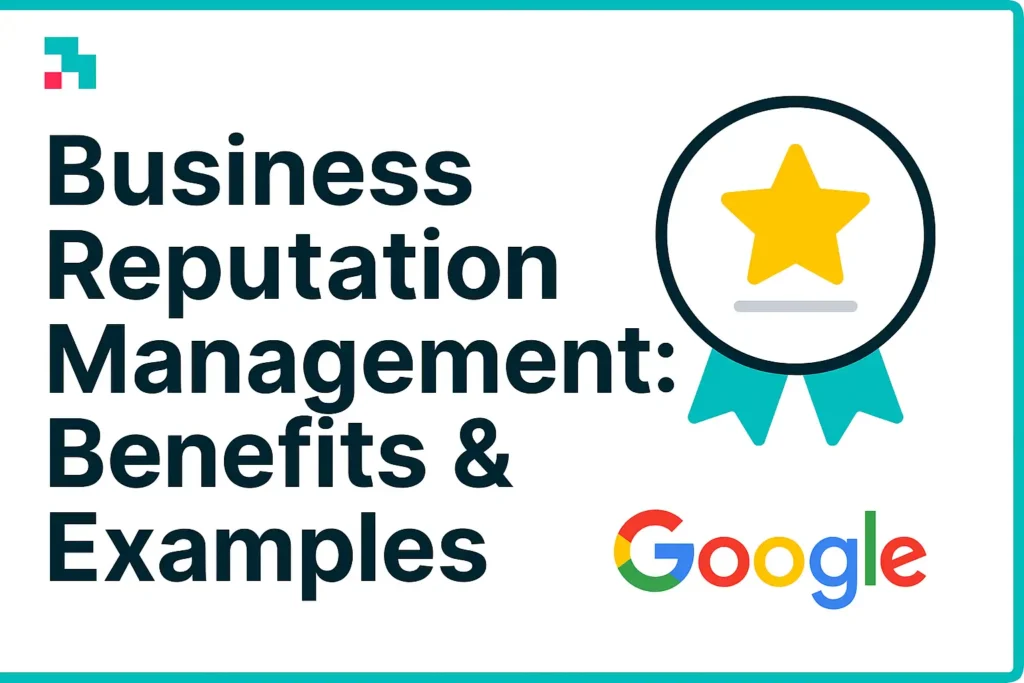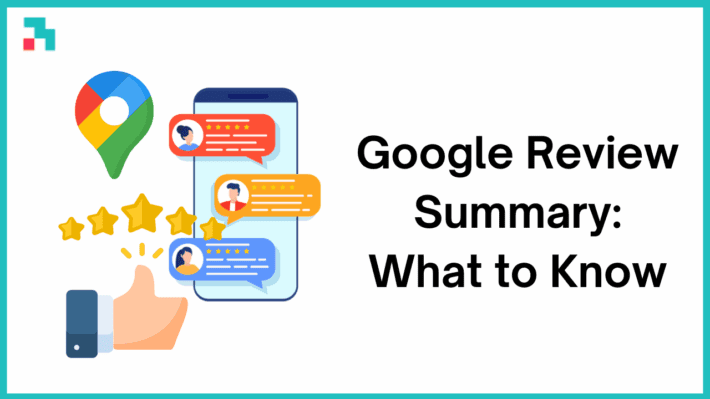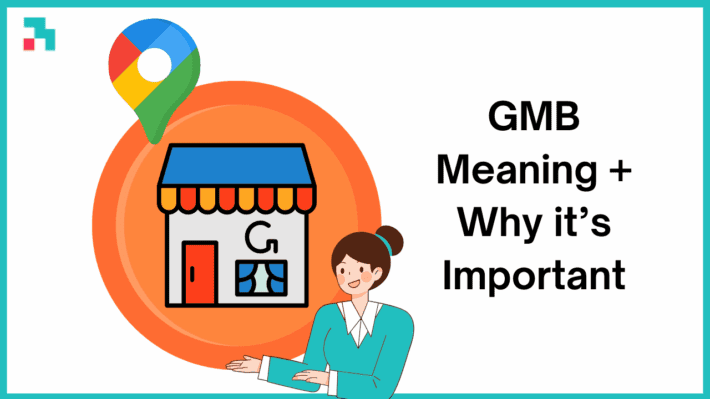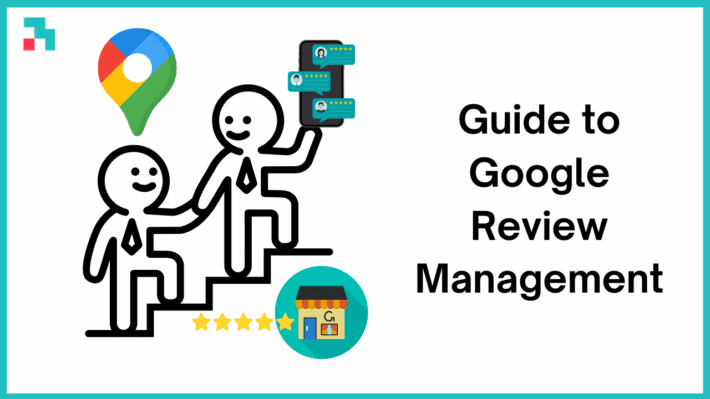Business Reputation Management: Benefits & Real Examples 2025

In 2025, how your business is seen online can decide whether customers choose you or your competitors.
A single search can reveal dozens of reviews, social media posts, and news mentions. That’s your business reputation and it’s one of your most valuable assets.
Every review, comment, and mention contributes to how people see you, and in today’s market, those impressions directly affect sales.
If you ignore business reputation management, other people will decide how your business is seen. In 2025, the businesses that succeed are the ones that watch what’s being said about them, reply fast, and use every chance to show why they’re the best choice.
Table of Contents
Key Takeaways:
- In 2025, your business reputation is shaped by every review, comment, and online mention.
- Active reputation management builds trust, improves search rankings, and drives repeat customers.
- Google reviews remain one of the most powerful forms of earned media.
- Combining review growth with GBP optimization maximizes visibility and credibility.
- Case studies from Domino’s, Starbucks, and Samsung prove transparency and fast action can reverse reputational damage.
- Paid, earned, shared, and owned media all play a role in a balanced reputation strategy.
- Even small businesses can compete with industry leaders through consistent, proactive management.
Top Benefits of Active Reputation Management
When you manage your reputation consistently, you’re not just protecting your image, you’re building assets that keep bringing in customers. Here’s what an active approach delivers:
1. More trust, faster.
People don’t want to gamble on an unknown business. A strong profile with plenty of positive reviews, quick responses, and recent updates gives instant reassurance. Customers are more likely to choose you over a competitor with a weaker presence.
2. Higher visibility in search.
Google rewards active, credible businesses. When you respond to reviews, post updates, and keep your profile optimized, you’re signaling that your business is alive and engaged. That can help push you higher in local search results, where most clicks happen.
3. Better control during a crisis.
Bad reviews or negative press can snowball if left unchecked. With active monitoring and fast responses, you can limit the damage before it spreads and sometimes even turn a critic into a fan.
4. More repeat customers.
Reputation management isn’t just about first impressions. Following up on reviews, thanking customers, and showing appreciation makes them more likely to return and to recommend you.
Reputation Management in Action – Real Examples (Case Studies)
Here are some real examples of how top companies handled reputation management damage.
1) Domino’s: Turning “Bad Pizza” Into a Brand Revival (2009–2011)
In 2009, Domino’s faced a brutal wave of criticism, from scathing online reviews for businesses to a viral YouTube video made by employees. Customers complained that the pizza tasted like cardboard. Instead of going quiet, Domino’s launched the “Pizza Turnaround” campaign.
They admitted the product wasn’t good enough, showed the real feedback they had received, and documented the changes step-by-step.
They replaced recipes, revamped ingredients, and even showed live customer reactions to the new pizza. By 2011, Domino’s had doubled its stock price and shifted public perception from “worst” to “worth trying.”
Lesson for small businesses: When you make improvements, make them public. Share before-and-after stories, invite fresh reviews, and prove you listened.
2) Starbucks: Crisis Response in Real Time (2018)
In April 2018, two Black men were arrested in a Philadelphia Starbucks while waiting for a friend, sparking national outrage. Within days, Starbucks’ CEO issued a public apology, met with the men, and announced that all 8,000 U.S. stores would close for racial-bias training on May 29, 2018.
They didn’t stop there. Starbucks published the training materials online for anyone to use. This quick, transparent action helped rebuild trust and showed customers they were serious about change.
Lesson for small businesses: If you face a PR crisis or negative review surge, act quickly, explain your plan, and let people see you take real steps.
3) Samsung: From Exploding Phones to a Transparent Fix (2016–2017)
In 2016, Samsung’s Galaxy Note 7 became infamous for battery fires. The company recalled millions of devices worldwide, offered refunds and replacements, and suspended production.
However, instead of simply moving on, Samsung held a global press conference in early 2017 to explain exactly what went wrong, complete with technical details and preventive steps for future models.
They also launched an 8-point battery safety check, communicated across ads and product launches.
Lesson for small businesses: If a real product or service flaw is behind your bad reviews, own it. Fix the issue, explain what changed, and encourage customers to update or add reviews to reflect the improvement.
What are the Online Reputation Management Channels?
Managing your reputation isn’t about one magic trick. It’s about showing up in all the right places, in ways you can control and ways you can’t.
Looking For Google Reviews? Claim your Discount Below
A useful way to think about this is through four main channels: paid, earned, shared, and owned.
1. Paid Media – Getting in Front of People Fast
This is the space you buy to grab attention: Google Ads, social media promotions, sponsored articles, influencer shout-outs.
It’s great for awareness, but it’s a rented spotlight, the moment you stop paying, it disappears.
The smart play is to use paid ads to push people toward channels that grow your lasting reputation, like your Google reviews page or your own website.
2. Earned Media – The Opinions You Can’t Buy (But You Can Influence)
Earned media is the coverage you get because people think you’re worth talking about – news articles, blog mentions, podcast features, and most importantly, Google reviews.
This is the gold standard of credibility. A five-star review from a real customer is worth more than any ad.
The problem? If you have no reviews, people assume you have no track record. That’s why we offer businesses the option to Buy Google Reviews from verified, real accounts.
Done right, this gives you a safe, steady flow of industry-specific reviews so you’re not stuck waiting months for momentum. Make sure you check out our packages and get the reviews your business deserves.
3. Shared Media – The Conversations You Join
Shared media is everything on platforms you don’t fully own but can directly interact with: Facebook, Instagram, LinkedIn, Yelp, and TripAdvisor.
Here, your job is to respond, engage, and keep your name showing up in a positive light. A quick reply to a comment or a repost of a glowing review can reach thousands more people than the original post ever would.
4. Owned Media – Your Home Turf
Your website, blog, email list, and Google Business Profile are fully under your control.
This is where you decide exactly how to present your story.
An optimized Google Business Profile is especially powerful because it’s often the first thing customers see when searching for you, and it pairs perfectly with strong reviews.
Think of owned media as the place where your best reputation wins are archived for anyone to see.
Conclusion
Your business reputation is one of your biggest assets. In 2025, it’s shaped by every customer interaction, every online mention, and every review that shows up when people search for you.
A single bad headline or unanswered review can undo months of hard work, while a steady stream of positive feedback can set you apart from even the biggest competitors.
Reputation management isn’t about controlling every opinion – it’s about showing customers you care, responding with professionalism, and actively building a public image you can stand behind.
And if you ever need help with growing your reviews or keeping your Google Business Profile at its best, we’re always here to make that process easier.
Frequently Asked Questions
What is business reputation management?
It’s the process of monitoring, improving, and protecting how your business is perceived online and offline. That includes managing reviews, social media mentions, media coverage, and your owned channels like your website.
Why is reputation management important for small businesses?
Small businesses often rely heavily on local trust and recommendations. A strong reputation boosts search rankings, increases conversions, and can make or break first impressions.
Can I remove bad reviews from Google?
Not unless they violate Google’s policies (spam, fake, harassment, etc.). In most cases, the better approach is to respond professionally and increase positive reviews to balance the score.
How quickly can reputation management improve results?
Some changes, like updating your Google Business Profile, can improve visibility within weeks. Building a steady stream of quality reviews can take longer, unless you jump-start it with safe, authentic review services.



